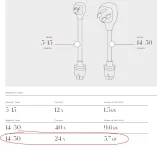- Joined
- Dec 17, 2021
- Messages
- 1,295
- Reaction score
- 1,996
- Location
- Greenville, SC
- Cars
- Sapphire 1 of 6
Lucid app can not at this time. It is on the update list. I bought electrify America home charger for $649. I ordered it before some long time EV owners recommended some other options like Juice Box. For me the electrify America option arrived quickly and plugged into my 14-50 outlet. It can be set to do off peak. I have it set for midnight to 6am. Not knowing how long until the Lucid app will allow this, I figured it will not take long to pay for itself, plus I wanted another cable anyway.i see. i wonder if this can be done via the Lucid app. it shouldn't be that hard to set a peak time so it knows when to actually start charging the battery and when to stop.

